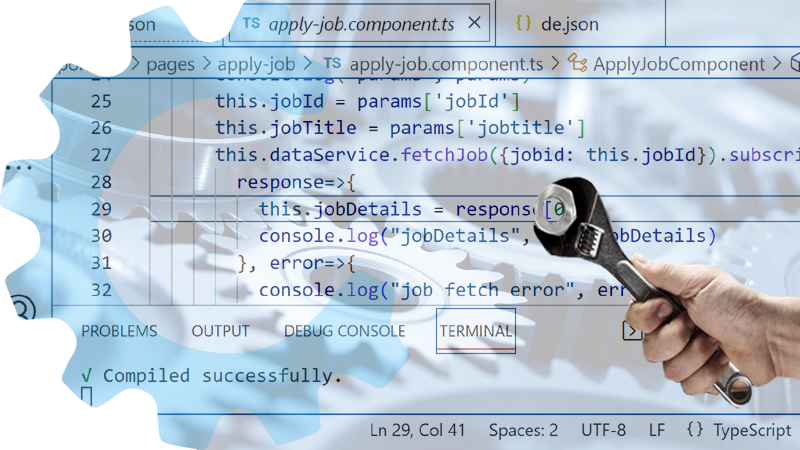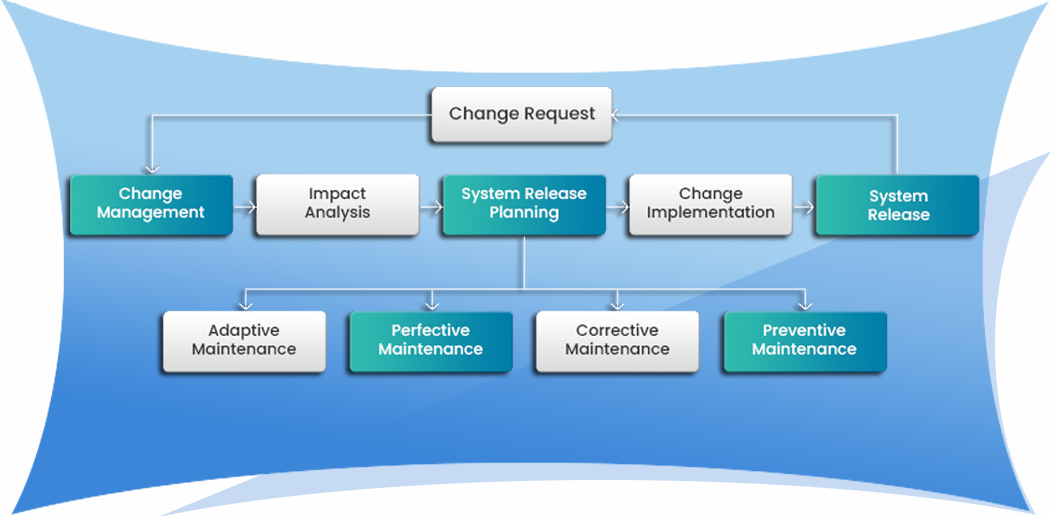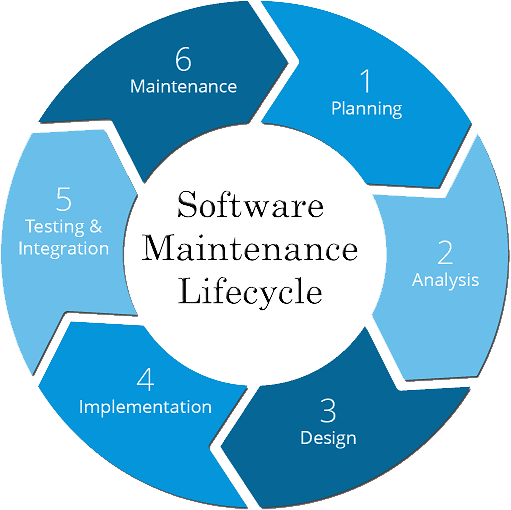Software Maintenance
It stands for all the modifications and updations done after the delivery of each version of software. Almost every company encounter a time when they fill to have a change in the Software they are using. As technology is upgrading rapidly, a default modification may be needed in the running software. It is the process of changing, modifying, and updating software to keep up with customer needs. It is done for several reasons including improving the software quality, fixing issues or bugs, to boost performance, and more.

Why Software Maintanance is Needed ?
There are various reasons, why a software may need modifications, few important reasons out of them are briefly mentioned here -
- Customer Requirements - Over the time, client may think of adding new features or edit or remove exisiting feature. This lead to modification in software.
- Market Conditions - Policies, such as taxation and newly introduced constraints like, how to maintain bookkeeping, may trigger need for modification.
- Dependent Softwares - If any of the depenndent software or hardware changes, the current software changes are needed to keep adaptability.
- Organizational Changes - Business level changes such as acquiring another company, venturing into new business, may lead to modifying softwares in use.
Process We Follow
It is executed in the system through a well-planned software maintenance process which is implemented in seven different phases. Those are:
Phase 1 – Identification As the name goes, in this phase of the software maintenance life cycle, the modifications are ‘identified’. Before implementing the changes for the requests raised, the modifications are first analyzed and classified according to the attention or maintenance it requires. This phase can be automated or manually done by a user.
Phase 2 – Analysis The practicality and feasibility of each verified modification request are planned to incorporate changes in the software. The analysis includes validated changes or input where the cost of modification is also estimated.
Phase 3 – Design The new framework of the software is determined according to the result of the analysis. Survey or test software is also developed for the purpose of safety and security.
Phase 4 – Implementation This is where the main or new software framework is implemented; as in, the codes are crafted, and in the new support system, specifications are added.
Phase 5 – System Testing In this testing, the implementation of codes and specifications are tested. This stage determines if any further changes or additions are required in the new model of software.
Phase 6 – Acceptance Testing This stage is performed by third-party end-users. They run a dummy software test, also known as a dry run test, to check if the implemented specifications are working properly, which was mentioned in the modification request.
Phase 7 – Delivery As and when the testing phase is cleared and the developers get a green signal from the third-party users, they deliver the software to the primary users.

TechDND's OFFER
There are astonishingly multiple technologies inclusive of enterprise software development, mobile app development, web app development, AI based services, information technology consulting and automation which are offered by TechDnD. Not only this, along with catering to several industries, they are also available with a lot of services like robotics, augmented reality, virtual reality, mixed reality, artificial intelligence, blockchain technologies, cloud computing and similarly many others. Thus the assurance of IT maintenance and software support is much high.
We provide maintenance service as per the client requirements
- Time Bound - We keep the software up and running by incorporating required changes with all shorts of runtime needs for a desired time agreed by the clients.
- Technology Wise - Customers might have different technology stack for different parts of a single software eco system.
- Regional - Modification also happens due a regional requirement. We form a specific team for such requirement.
- Customer based- A client might have a number of customers and can have different maintenance team working for different customer.
Software Maintanance is a cyclic process
Just like any vehicle, hardware device we use or the house we live in, we continiously do the maintenance of all those in a perodic manner, similarly, the software in use are also needed to be maintained in a cyclic way.

